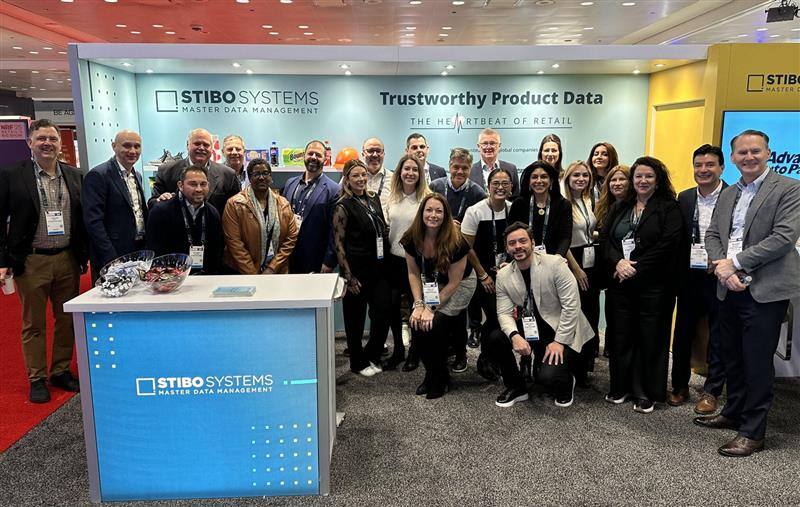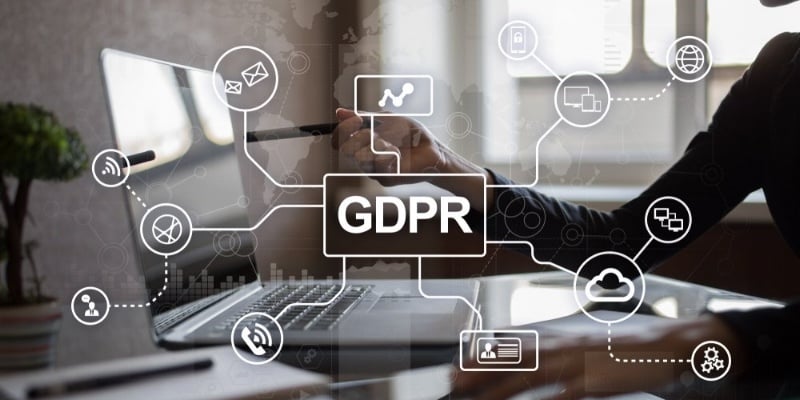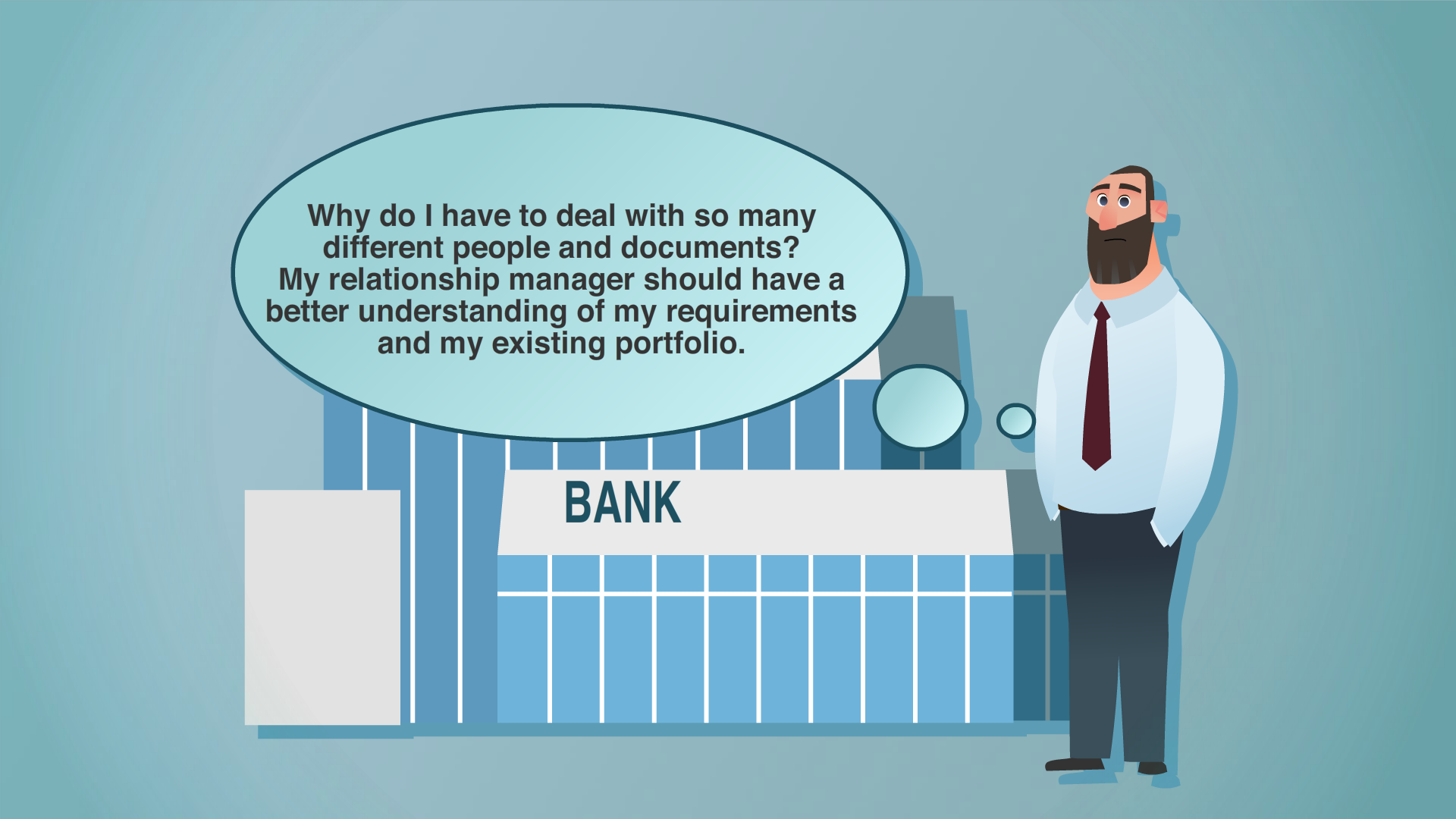From customer contact details to product information to supplier locations — organizations are collecting more data than ever before. But only a fraction is actually valuable.
You don’t need more data. You need better data — the kind modern master data management (MDM) provides. Reliable data is critical to long-term, sustainable business growth.
Accurate and quality data helps marketing and customer experience (CX) teams:
- Leverage AI
- Create hyper-personalized experiences throughout the customer journey
- Deliver a consistent omnichannel CX
- Get a unified, 360° view of customers
- Accurately target customer segments to boost campaign performance and drive growth
Long story short? Data is invaluable — if it's consistent, accurate and trustworthy. Master data management delivers that data so you can get more value from it and do more with it.
Quick insights
- You don’t need more data — you need better data. MDM transforms data into a high-value asset by making sure it’s accurate, consistent and trustworthy.
- Valuable data shares seven core traits. It's correct, complete, current, consistent, contextual, controlled and analyzed — all of which are supported by MDM.
- Bad data leads to real business problems. From irrelevant marketing to compliance risks, poor data quality can erode customer trust and performance.
- Data governance isn’t just about compliance. It’s a framework for ensuring data quality, accountability, and scalability across the enterprise.
- Data standardization and cleansing are critical. MDM automates these processes to eliminate inconsistencies, duplicates and outdated records.
- Accessibility means more value. Clean, governed data is only useful if it’s shareable across teams and systems — MDM makes sure the right people have the right access.
- MDM powers AI. Without clean, unified data, AI models are prone to bias and error. MDM provides the trustworthy foundation AI relies on to deliver business value.
- MDM supports smarter, faster decisions. MDM creates a single source of truth, giving you the trust and confidence in your data to act.
What is master data management?
Master data management gives you the trustworthy and consistent data you need to get the most value from your customer, business partner, product, supplier and location data.
MDM combines processes and governance standards to unify and manage your most critical business data — across systems and teams. It creates a standard for how you define, format and apply quality rules to data assets.
Think of MDM as your single control system for data quality, making sure everyone uses the same trusted data.
What makes data valuable?
Duplicate, outdated or poorly governed data that lives in silos is, at best, useless. But at worst? It can lead to flawed decision-making, a poor CX, ineffective marketing and bad product experiences.
So, how can you make sure your data is as valuable as possible? We'll get into this more later, but in general, you'll get the most value from data that's complete, updated, cleansed, consistent, reliable and trustworthy.

You already know about the power of good data — hyper-personalization, laser-accurate targeting and segmentation, a better CX — but what happens when you have low-quality data? Take a look at a few examples:
- Low customer satisfaction for retailers. When you have bad customer data, like that which hasn't been standardized, you might send irrelevant emails to customers with inaccurate product descriptions. This creates a frustrating product experience and can also drive reduced overall customer satisfaction. Without countless options, customers will go elsewhere to shop.
- Lost cross-sell opportunities for consumer packaged goods (CPG) companies. A CPG with dozens of sub-brands can't leverage a unified customer view when it has bad data. That means ineffective cross-brand personalization, so you lose out on cross-sell opportunities that could get customers to try new products and drive conversions.
- Slowed production across departments for manufacturers. When you make a design change to an existing product, everyone needs to know about it. But with disconnected systems, new data gets trapped in a format only product lifecycle management systems can understand, slowing production, causing marketing to publish inaccurate product details, jeopardizing compliance and more.
7 characteristics of valuable data
We've already established that not all data is valuable data, but there are a few common characteristics of trustworthy data. Widely recognized as core traits of data quality, these seven characteristics define what makes data truly valuable — and usable — across the enterprise.
What quality data really comes down to is data that's fit for purpose. Can you use it as intended? Is it accurate, valid, and clearly understood across the organization? To get value from your data, it needs to be reliable.
So, what exactly makes data valuable? These seven traits are the foundation of high-impact data, made possible by modern master data management.

1. Correct or accurate data
High-quality data is accurate and reflects reality, whether it's a customer's name, product description or a supplier's location. MDM provides correct data by validating and standardizing entries to virtually eliminate errors.
2. Complete data
Missing or incomplete data prevents you from getting the 360° view of your customers needed for everything from personalization and targeting to accurate shipping.
MDM combines data from multiple sources to fill in missing but necessary information, like name, address, purchase history and more.
3. Current data
Modern master data management pushes real-time updates and regular synchronization across the enterprise to keep data up-to-date and relevant.
But when you have outdated data, it becomes a liability — eroding customer trust, preventing accurate personalization and segmentation and leading to lost revenue.
4. Consistent data
When data lives in silos, it's not uncommon for it to become inconsistent. A customer's address may say "Street" in one system or "St." in another or products may have different specs.
But MDM resolves discrepancies through standardization to give you consistent data that's aligned across all platforms and sources.
5. Contextual data
Context gives data meaning and makes it relevant to your business. Master data management delivers contextual data by linking metadata, attributes and hierarchies that give it relevance. Without context, you might not get the full picture or miss opportunities.
6. Controlled data
High-quality, valuable data follows clear quality and security standards. Strong data governance and security measures don't just reduce risk — they highlight the business value of data governance by improving compliance and building trust across teams.
7. Analyzed data
Data should provide crucial insights that drive informed action — that starts with analysis. Analyzed data helps identify which campaigns drive conversions so you can optimize spend and refine strategies, like AI-powered personalization (fueled by modern master data management).
MDM supports effective data analysis, reporting and business intelligence by giving you a clean data foundation.
Pro tip: Want to start improving data quality on your own? Check out our checklist.
How to get more value from your data
You know what makes data valuable, but how do you go about extracting that value? We're breaking down a few ways you make sure you're getting the most out of your data, including:
- Building a data culture
- Establishing data governance policies
- Making data accessible across the enterprise
- Using modern master data management
Build an organization-wide data culture
Building a data culture isn't just about getting everyone onboard with using data, it's about embedding data into your organization's processes, mindset and decision-making.
A strong data culture assures your people and processes are aligned to treat data as a strategic asset for decision-making. It's held up by five pillars.

1. Relevance and responsibility
With so much data out there, it can be difficult to understand how to use it or why it's relevant. But when teams understand the impact, they're more likely to take ownership of its quality. Instead of data being IT's job, the mindset starts to shift toward, "Data is everyone's job."
AI has made it clear that many organizations still lack a true data culture. As data becomes a board-level priority, building that culture means understanding the relevance of valuable data and taking ownership of it, embedding data in decision-making, and aligning data strategy with business strategy. It’s not just about tools — it’s about mindset, responsibility, and execution.
When marketers understand how data impacts personalization or customer support sees how data affects customer satisfaction, they see how data is relevant to them, driving increased responsibility for its quality.
2. Data-informed decision-making
A culture built around data encourages employees and teams to use data as a north star, guiding decisions from the start. Instead of validating a strategy with data, you can use data to inform your strategy — shifting from reactive to proactive.
3. Company-wide integration
Data silos create countless problems, from inconsistencies and missing information to poor data sharing. That's why you need a data strategy that doesn't live in a silo but integrates fully into the broader business strategy.
Align your data goals with business goals, like improving customer retention or accelerating time to market, and make sure any data initiatives support those outcomes.
4. Data literacy
Having mountains of data is useless if your employees can't understand how to interpret or use it effectively. A focus on data literacy is vital to making data both accessible and actionable.
Those who get the most value from their data are the teams that have access to training and documentation and leverage tools to help them understand how to interpret and apply data.
“One of the key components of a strong data culture is having a workforce who is data literate — the ability and the mindset to read, work with, [analyze], and use data ethically to solve challenges.”*Deloitte, Building a Data-Driven Culture Through Data Literacy
5. Measurement and control
As a marketer or CX leader, you already know the importance of metrics and measurements. Data is no different. To build a strong data culture, you need processes in place for monitoring and measuring data quality and governance policies to enforce data quality standards.
It underpins the importance of master data management — it provides the structure and tools to maintain quality, trustworthy data.
Establish clear governance policies
Alongside laying the foundation for a strong data culture, you need to create processes and policies — known as data governance — for managing data to ensure data quality.
Governance provides a framework that ensures everyone follows the same standards for data quality, security,usability and responsibilities. Here are a few benefits that highlight the business value of data governance:
- It ensures you're compliant with regulations like GDPR and CCPA so you can avoid costly fines and broken customer trust
- It helps track data lineage so you know where your data came from and how it was used, increasing trust in the data
- It defines responsibility and accountability for data ownership and management
- It helps your data practices scale with your business as you grow
Data governance also emphasizes the importance of master data management: enforcing governance through workflows, validation and approvals. It makes sure only clean and accurate data goes into your systems.
Make your data accessible and shareable
Clean, standardized and governed data is a goldmine for smarter decision-making. But if it lives in silos or is inaccessible, all that value is locked away — marketers, CX leaders, IT and other teams reliant on data for decision-making get stuck trying to access business-critical data.
Instead of seamless data flow, you end up with data stored in silos, fragmented across systems. The result? Different teams might be working with different versions of a customer profile, leading to inconsistent experiences, missed opportunities and wasted resources.
There is no single source of truth — just conflicting versions scattered across systems and teams. Making data accessible and sharable breaks down silos and gives you that centralized, single source of truth.
Pro tip: Accessibility doesn’t mean a free-for-all. Modern master data management confirms that the right people have access to the right data — with the right level of control.
Leverage MDM
So, you've got high-quality data that's cleansed, governed, standardized and easily accessible to the right people. That should be enough to get more value from your data, right? Well, sort of.
While the data we described is ideal, we don't want to gloss over the fact that getting your data to that point is hard work. But you can effectively bypass that work by leveraging MDM.
Modern master data management brings together the foundational elements you’ve worked to establish — governance, standardization, cleansing, accessibility — and keeps them running in sync. It creates a single source of truth.
A few of the benefits of master data management include:
- Automatically validating and standardizing data
- Enriching data from multiple sources to fill in missing information
- Applying updates in real time and synchronizing them across the enterprise
- Enforcing governance policies and approvals you set up
- Reconciling discrepancies across systems to ensure consistency and quality
For marketing and CX teams, MDM in action looks like a clear picture of your customers, more accurate targeting and segmentation, faster time to market and stronger compliance with industry regulations.
Why AI needs MDM
AI isn't going anywhere. Businesses have fully adopted it, using it to boost efficiency, gain deeper insights and make smarter, faster decisions.
But there's a catch: AI needs reliable, trustworthy data to be effective. That's where master data management best practices come into play.
MDM makes sure that the data feeding your AI models meets the standards for data quality, giving it a reliable data foundation to work from. Without this foundation, AI might amplify these data errors and deliver flawed insights that can negatively impact the business.
“Without MDM, AI is guessing in the dark—drawing conclusions from fragmented, inconsistent data that leads to missed opportunities and flawed decisions. With MDM, AI sees clearly. It learns from a single, trusted source of truth, transforming raw data into refined intelligence. That’s how predictions become precision, and automation becomes an advantage.”Alison Buford, Product Marketing Manager at Stibo Systems
Beyond data quality, MDM also supports regulatory compliance and ethical AI use — a growing concern for many businesses striving to build responsible, transparent AI systems. Simply put, MDM doesn't just support AI — it powers it — delivering real business value.
Modern master data management: Delivering trustworthy data you can rely on
Valuable data isn’t just about being accurate. It should meet the seven characteristics of data quality so you can actually get value from it. Like making data-informed decisions, getting sharper insights and powering AI.
One of the many benefits of master data management is that it gives you a foundation of clean, reliable and trustworthy data. When you have that data and pair it with a strong data culture, that's when you realize the full value of your data — that's when it becomes a strategic advantage.
Looking for a partner to help you get more value from your data? Learn more about us and Stibo Systems Platform so you can use your data as it was intended — a competitive driver of business growth.





































































































































































































